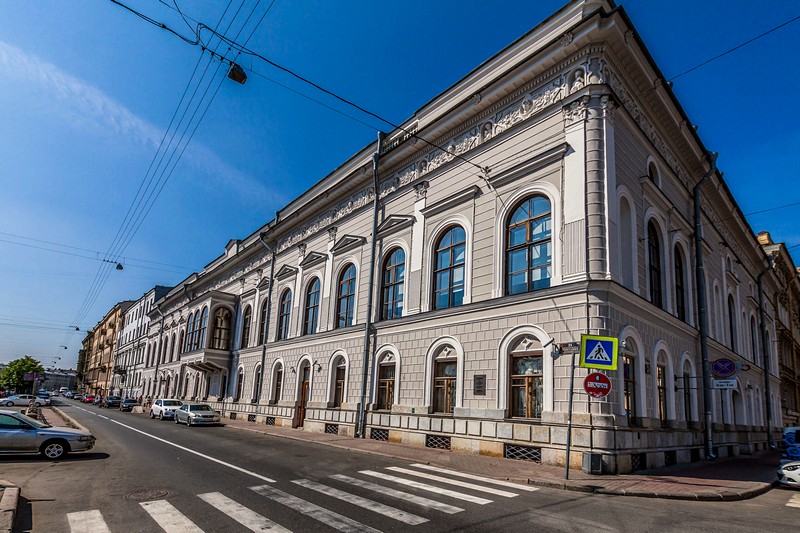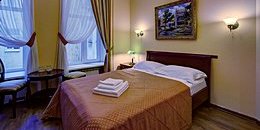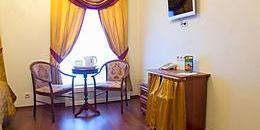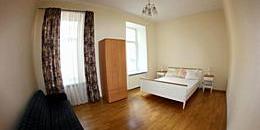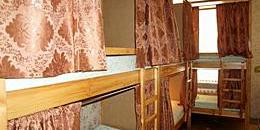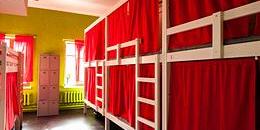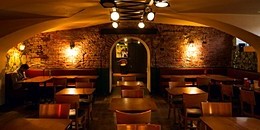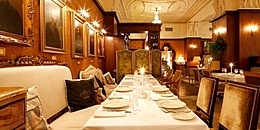Shuvalov Palace (Museum Faberge)
The palaces along the Fontanka River can almost match those on the Palace Embankment for variety and splendour, among them world-famous palaces such as the Anichkov, Beloselsky-Belozersky, and Sheremetev Palaces. The Shuvalov Palace, although now less famous, enjoys a superb location on the corner of Italyanskaya Ulitsa, and was renowned for the balls held there in the first half of the 19th century which were frequented by all the Petersburg nobility, including the imperial family.
The exact date of the palace's construction is unknown. It is presumed to have been built at the end of 18th century by the great neoclassical architect Giacomo Quarenghi. Prior to 1799, the palace was owned by the Vorontsov family before it was acquired by Countess Maria Naryshkina, lady-in-waiting to Catherine the Great. It was under the ownership of the Naryshkin family that the palace became known as one of the centres of society in St. Petersburg, with the Grand Ballroom (also known as the Alexandrovsky or White Column Hall) hosting balls for over a thousand people, music provided by the Naryshkins' horn orchestra, where each instrument played only a single note. Other attractions of the palace included the Picture Gallery, which housed one of Petersburg's richest collections of Western European art at the time. Among the guests at the palace were the poet Vasily Zhukovsky, and the fabulist Ivan Krylov, as well as Alexander I and his brother, Grand Duke Konstantin Pavlovich.
Reconstruction of the building was undertaken by architects Bernard de Simone and Nikolay Efimov 1844-1846 in preparation for the wedding of Sofia Naryshkina to Count Pyotr Shuvalov, after which the building became known as the Shuvalov Palace. From this period date the palace's Renaissance Revival facades and many of the surviving interiors, including the grand entrance hall and marble staircase, the Knights' Hall, the Red, Gold, and Blue Drawing Rooms, and the redecoration of the Grand Ballroom with marble columns and sculptural panels depicting scenes from the Trojan War.

After the Revolution, the Shuvalov Palace was opened as a museum. The Naryshkin/Shuvalov family treasures were then dispersed to other museums, and the palace became home to various literary organizations that were eventually unified under the Union of Writers of the USSR in 1934. The palace was severely damaged by bombing during the Siege of Leningrad, and after extensive restoration became the House of Peace and Friendship in 1965. Today, the palace houses the St. Petersburg Center for International Cooperation - home to various conferences, seminars, and exhibitions dedicated to strengthening business and cultural ties between Russia and other countries. There are various plans afoot to turn the palace into a museum.
| Address: | 21, Naberezhenaya Reki Fontanki |
|---|---|
| Metro: | Nevsky Prospekt / Gostiny Dvor |
| Directions: | Exit Gostiny Dvor Metro Station for Sadovaya Ulitsa or Nevksy Prospekt Metro Station for Mikhailvoskaya Ulitsa. Cross Nevsky Prospekt via the pedestrian underpass and walk right until you reach the Anichkov Bridge. Turn left along the Fontanka River, and the palace is on the corner of the first block. |
| Open: | Monday - Sunday, from 10 am to 9 pm. Last admission at 8 pm. |
| Closed: | Friday |
| Telephone: | +7 (812) 333-2655 |
| Admission: | Adult: RUB 450.00. Audio-guide: RUB 150.00 |
| Ticket purchase online: | http://tickets.fsv.ru/en |
| Photo and video: | Free |
| Website: | http://fabergemuseum.ru/en |
| What's nearby? | Fontanka River, Nevsky Prospekt, Anichkov Bridge, The Horse Tamers, Anichkov Palace, Sheremetev Palace |

